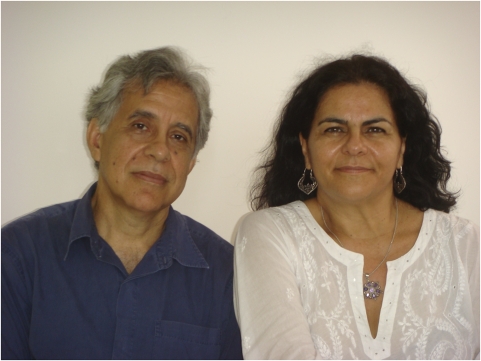Brazil is a large country, with a population of almost 190 million. Despite its wide socioeconomic disparities, Brazil is classified as a middle-income country. A number of important political, economic, and social changes have taken place in recent decades in Brazil, including changes in population health. There has been a sharp decrease in infectious-disease mortality, and deaths from cardiovascular diseases and cancers now predominate. The major vaccine-preventable diseases have been eradicated or are disappearing. A massive income-transfer program has caused a decrease in the prevalence of child malnutrition, which we hope will soon be eliminated. Violence-related mortality has increased, however, and certain infectious diseases (such as dengue fever) continue to generate public fear and demand resources.
Important changes have also occurred in Brazil's health system. After a period of military dictatorship that ended in 1988, the country's health policies deviated from the World Bank's neoliberal recipe for reforming national health systems. The country's new constitution established health as a fundamental social right and obligated the government to provide health care for every citizen. The Brazilian congress approved laws to reform the Brazilian health system on the basis of the principles of decentralization, integrality, popular participation, and equity. These developments were largely the work of a political movement led by proponents of public health (termed “collective health” in Brazil) who were also prominent figures in the overthrow of military rule.
Political, financial, and organizational constraints have prevented full implementation of desired changes in Brazil's health system, but many important advancements have occurred over the past 20 years. There is now extensive social control over the health system; a variety of high-cost treatments, including organ transplantation, are freely accessible to all; and investments in health research and technology continue to increase. Yet there are still problems with health service quality and access to health care, especially for tertiary care and in the most deprived areas of the country.
In the early 1990s, a Family Health Program (FHP) was created to reform Brazil's primary health care system. The FHP organized multidisciplinary health care teams comprising physicians, nurses, community health workers, and oral health professionals. Each team is responsible for meeting the basic health care needs of a specified number of households in its area. The program immediately gained popular approval and the support of leaders from different political factions, which allowed it to spread throughout the country in only a few years. The FHP was launched in the poorest, most rural areas but is quickly advancing into wealthier, more urban regions. Today, more than 30 000 FHP teams are active in Brazil, covering almost 50% of the population, and the program is still expanding.
The Brazilian scientific community now has a unique and important opportunity to evaluate the impact of the FHP and other programs designed to improve population health. In this issue of the Journal, Aquino et al. present their study of the FHP's impact on infant mortality. Their findings demonstrate that the FHP contributed to a decrease in infant mortality rates. The FHP's effects were strongest in areas with the highest infant mortality rates and the lowest human development indexes before the program was initiated, suggesting that the FHP can contribute to decreases in social inequalities in health in Brazil.



